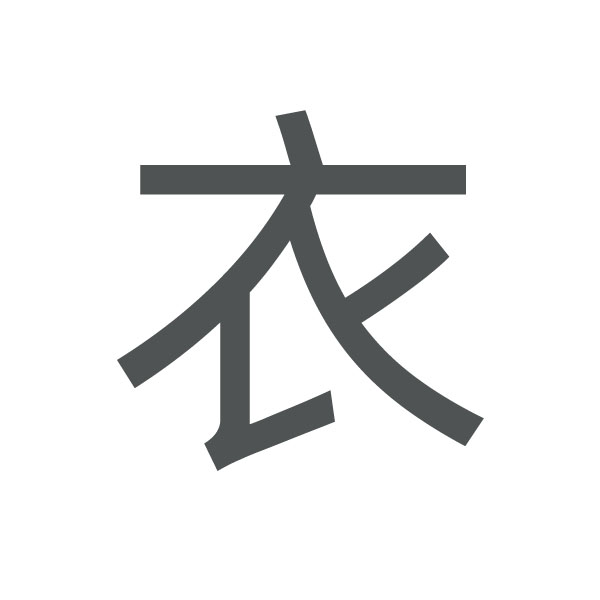
1. Kanji Breakdown: 衣
This kanji represents a fundamental human need and cultural element.
Meaning: Clothing, clothes, garment.
Reading:
Onyomi (Sino-Japanese reading): イ (i)
Kunyomi (Native Japanese reading): ころも (koromo), きぬ (kinu)
The kanji is a pictograph (象形文字). Its ancient form clearly depicted a "kimono-like garment" with a collar, sleeves, and the front opening. This elegant and simple pictograph has been stylized over time but still retains the basic shape of a garment.
2. Stroke Order and Writing
Learning the correct stroke order is crucial for balanced and beautiful kanji. "衣" has 6 strokes.
Here is the stroke order diagram and explanation:
Total Strokes: 6
The top dot. (A short stroke)
The horizontal stroke. (From left to right)
The left-falling stroke. (A long diagonal from the top)
The right-falling stroke. (A long diagonal that crosses the previous one)
The left-falling stroke at the bottom. (A shorter diagonal)
The final right-falling stroke. (A dot or a short stroke)
Key Writing Tips:
Write from top to bottom.
The character should be symmetrical and well-balanced.
The central crossing strokes (3 & 4) form the core structure, representing the overlapping front of a garment.
The final two strokes (5 & 6) are like the hem of the clothing.
3. Vocabulary and Example Sentences
Here are some common words using "衣" and how to use them in sentences.
Vocabulary
衣 (ころも, koromo)
Meaning: Clothing, garments (a somewhat classical or elegant term).
Example: 美しい衣をまとう。
Romaji: Utsukushii koromo o matou.
English: To wear beautiful garments.
衣服 (いふく, ifuku)
Meaning: Clothing, clothes (a standard, formal term).
Example: 適切な衣服を選びましょう。
Romaji: Tekisetsu na ifuku o erabimashou.
English: Let's choose appropriate clothing.
衣類 (いるい, irui)
Meaning: Clothing, garments (refers to clothes in general, as a category).
Example: 衣類をタンスにしまう。
Romaji: Irui o tansu ni shimau.
English: I put the clothes away in the chest of drawers.
衣装 (いしょう, ishou)
Meaning: Costume, attire, outfit (especially for performance or special occasions).
例文: 彼女は舞台衣装を着ている。
Romaji: Kanojo wa butai ishō o kite iru.
English: She is wearing a stage costume.
衣食住 (いしょくじゅう, ishokujuu)
Meaning: Clothing, food, and housing; the basic necessities of life.
Example: 衣食住が安定している。
Romaji: Ishokujuu ga antei shite iru.
English: The basic necessities of life (clothing, food, and shelter) are stable.
浴衣 (ゆかた, yukata)
Meaning: Yukata (Japanese summer cotton kimono).
Example: 花火大会に浴衣を着て行く。
Romaji: Hanabi taikai ni yukata o kite iku.
English: I will wear a yukata to the fireworks festival.
Summary
Kanji: 衣
Core Meaning: Clothing, Clothes, Garment.
Readings: On'yomi イ (i), Kun'yomi ころも (koromo)
Stroke Order: 6 strokes. Focus on its symmetrical, garment-like structure.
This kanji is essential for talking about clothing, fashion, and basic life necessities. It forms part of many compound words and is deeply woven into the language. By mastering its stroke order and vocabulary, you will be able to correctly write and use this fundamental character.